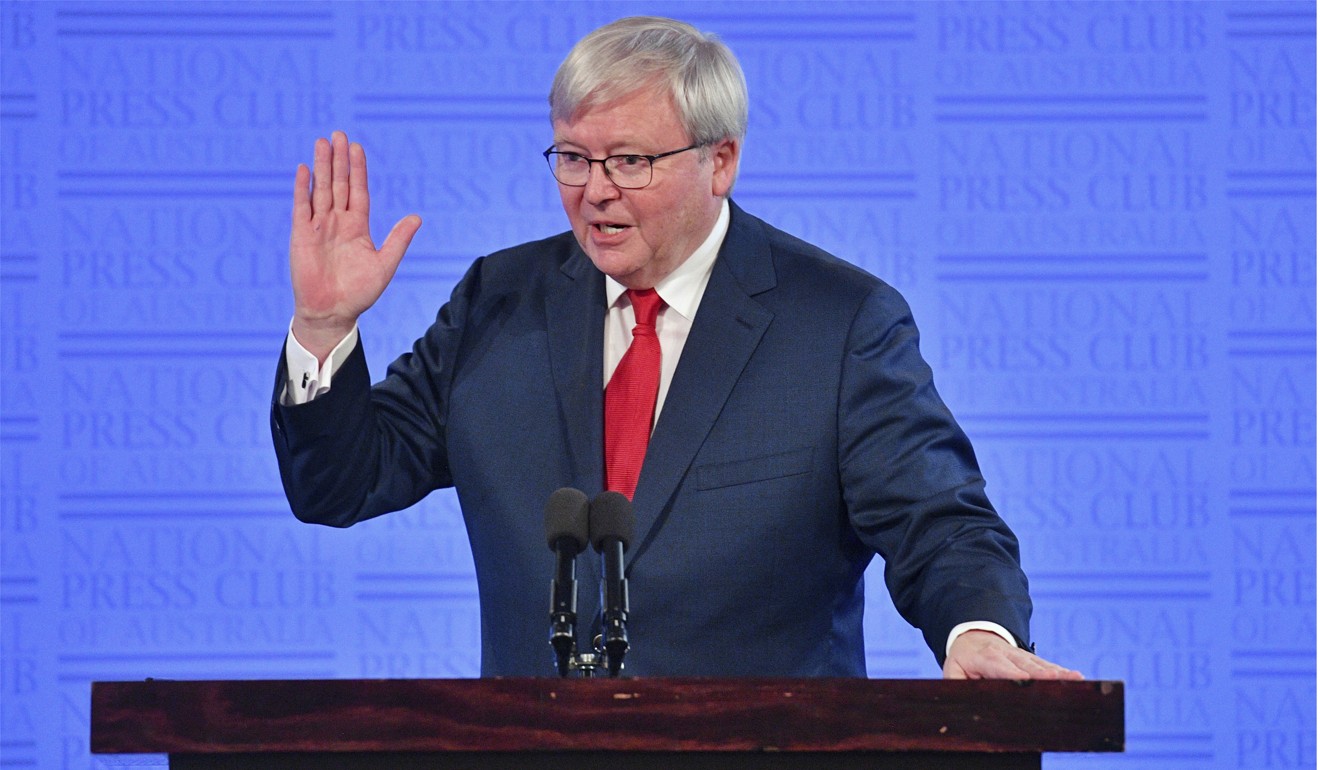
How fear and paranoia about China’s rise breathed new life into the ‘Quad’ – at Asean’s expense
Richard Heydarian writes that the alliance of the US, Japan, Australia and India could sideline Asean in regional issues while unleashing a power rivalry in a dynamic region
As Asia’s security architecture undergoes a once-in-a-lifetime transformation, new hegemonic struggles and alliances are coming to the fore. The biggest winner of the emerging order, so far, is no less than China.
Perturbed by the shifting geopolitical ground under their feet, the United States and its major regional partners are forming a de facto counter-alliance. Together with Japan, Australia and India, the US is hoping to prevent any direct challenge to its hegemony in Asia.
The risk, however, is that the quadrilateral alliance, better known as the “Quad”, will be provocative enough to fuel Chinese assertiveness, but never consolidate sufficiently to optimally preserve the existing regional order.

The ultimate casualty, however, is the Association of Southeast Asian Nations (Asean), which has excruciatingly sought to shape the regional security architecture according to the principles of dialogue, multilateralism and institutionalised diplomatic engagement.
After years of dormancy, the Quad powers are stepping up joint naval exercises, diplomatic countermeasures and defence technology exchanges among themselves.
Philippines seethes over Chinese build-up in South China Sea
The ultimate aim is to intimidate and constrain China’s ambitions, deterring any revisionist challenge to the status quo by regional rivals.
After decades of multilateralist interaction among major regional actors, we are starting to witness the precarious return of a great power rivalry, which could tear asunder the fabric of Asian peace and prosperity.

To be fair, the Quad, at least in its initial conceptualisation, was a largely innocuous pooling of humanitarian resources among like-minded powers in the Asia-Pacific region.
It began with ad hoc humanitarian help and disaster relief cooperation among Australia, India, the US and Japan during the 2004 Indian Ocean tsunami which wreaked havoc across multiple regions in Asia as it radiated from Indonesia to Africa.
Troubled waters ahead for code of conduct in South China Sea
Three years later, during a meeting in Manila, the leaders of the US, Japan, Australia and India held a high-profile meeting on the sidelines of the Asean Regional Forum for the first-ever Quad summit.
Months later, they held joint naval exercises with Singapore in the Indian Ocean, a massive undertaking that saw the participation of as many as 20,000 personnel.
But the emerging alliance immediately fell into disarray, when Australia, under the China-friendly Kevin Rudd administration, refused to take part in any future Quad-related activities.
Beijing made it clear that it saw the Quad as nothing but a thinly veiled attempt at containment of Asia’s most powerful nation.
Beijing made it clear that it saw the Quad as nothing but a thinly veiled attempt at containment of Asia’s most powerful nation.
The fading of Quad 1.0 allowed Asean to resume its role as the ultimate arbiter of an inclusive – rather than competitive – regional security architecture.
Almost a decade later, however, China hawks have regained the upper hand. Quad 2.0, with an unvarnished anti-China imperative at its core, is the brainchild of two principal figures: Japanese Prime Minister Shinzo Abe and former American Pacific Command chief Admiral Harry Harris.
Over the past decade, Abe has advocated for the creation of a “security diamond” of like-minded democratic nations in Asia to counter the rise of authoritarian China.
US urges Southeast Asia to take strong stand on South China Sea
More recently, Harris, the incoming ambassador to Australia, promoted the “Indo-Pacific” vision, where America and India, together with Japan and Australia, will stand as the pillars of the existing liberal order in Asia.
Quad 2.0 marks the nexus between Abe’s democratic security diamond and Harris’ Indo-Pacific strategic concept. And the Trump administration seems to have embraced this new paradigm with verve and vigour.

To the chagrin of Washington and its allies, Beijing has found itself in a geopolitical sweet spot as it carves out the regional order in its own image. America’s relative decline as well as tempestuous politics has dramatically undermined its leadership and influence across Asia.
And China has wasted little time stepping up to fill the leadership vacuum, while gradually dominating adjacent waters, especially the South China Sea.
India and Asean look to grow closer without offending Beijing
In the view of the US and its allies, China is no longer just seeking an expanded voice within the existing order, but increasingly offering alternative sets of institutions and informal rules which are crowding out status quo powers.
In this light, America’s growing emphasis on the “Indo-Pacific” concept signals two interrelated developments that we should bear in mind: first, an embrace of India as a counter-force to China at the heart of the Asian land mass and major oceans; and second, a lack of confidence in Asean’s ability to hold the line and maintain a favourable order in Asia.

Beijing has skilfully coaxed and cajoled a number of American allies and partners with a combination of unshakeable diplomatic-military resolve and awe-inspiring economic initiatives. Asean, in particular, has been highly receptive to China’s overtures, agreeing to its first-ever joint naval exercises with Beijing later this year.
Southeast Asian countries such as Thailand and the Philippines, American treaty allies, have gone the extra mile to mend and deepen ties with China in exchange for large-scale economic benefits.
As Asean chair, Singapore faces a diplomatic test it may well fail
Middle powers such as Indonesia and Singapore, meanwhile, have preferred to maintain robust economic ties with China rather than confront the Asian powerhouse vis-à-vis its maritime ambitions. In addition, Asean, as a collective body, has repeatedly failed to put up a unified front against China on flashpoints such as the South China Sea disputes.
Ultimately, the revitalised Quad is a product of fear and paranoia about the rise of China, threatening to fully sideline Asean in regional affairs while unleashing a potentially destructive era of great power rivalry in the world’s most dynamic region.
Richard Heydarian is a Manila-based academic and author

